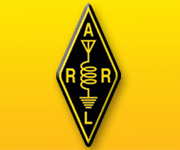Amateur Radio Heads into WRC-15 “With Every Possibility of Success”
The just-ended second World Radiocommunication Conference 2015 (WRC-15) Conference Preparatory Meeting (CPM15-2) left Amateur Radio “with every possibility of success” heading into WRC-15 this fall, said ARRL Chief Technology Officer Brennan Price, N4QX. Price represented the US at CPM15-2, which wrapped up on April 2. The 2-week-long meeting addressed a variety of spectrum-related matters, including several dealing with Amateur Radio. Its Report to WRC-15 focuses on technical, operational, and regulatory matters that ITU member-states will consider in developing their proposals to WRC-15. More than 1250 participants from 105 ITU member-states attended.
“Through our combined efforts, methods favorable to Amateur Radio were included in all appropriate places within the CPM report,” Price said this week. “Amateur Radio will enter WRC-15 with every possibility — although no assurance — of success.”
In addition to Price, those representing Amateur Radio at CPM15-2 included International Amateur Radio Union (IARU) President Tim Ellam, VE6SH/G4HUA; Bryan Rawlings, VE3QN (Canada); Ulrich Mueller, DK4VW (Germany); Ken Yamamoto, JA1CJP (Japan); Hans Blondeel Timmerman, PB2T (The Netherlands), and IARU Vice President Ole Garpestad, LA2RR (Norway).
Delegates to CPM15-2 okayed text for WRC-15 agenda item 1.4, dealing with a secondary Amateur Radio allocation at 5 MHz. “The methods proposed in the text, as expected, are all over the map — ranging from no change to an expansive allocation of 5275-5450 kHz, with explicit suggestions of 15 kHz and 100 kHz in between, and a few methods with details to be filled in later,” Price explained. “In short, there is a wide divergence of opinion, and no certainty as to the outcome.”
Text for other Amateur Radio-related agenda items “appropriately reflects our concerns,” Price said. “Text for agenda item 1.1 correctly notes that no compatibility studies between Amateur Radio and mobile broadband applications have been conducted for the bands under consideration in which there is an Amateur Radio allocation.” He said a method for agenda item 1.6, proposing to authorize Fixed-Satellite Service operation in the 10-10.5 GHz band, was removed from the final text, while a method was added to agenda item 1.12 at the request of the US to provide appropriate protections to the Amateur Satellite Service at 10 GHz, “to supplement the high degree of compatibility that proposed Earth Exploration Satellite Service operation has demonstrated in the band,” he added.
WRC-15 will get under way on November 2 in Geneva, and will conclude on November 27. World Radiocommunication Conferences are mandated to review and revise the Radio Regulations, the international treaty governing the use of RF spectrum and satellite orbit resources.
CPM Chairman Aboubakar Zourmba thanked delegates for their “excellent spirit of cooperation and coordination of activities” during the 2-week gathering. ITU Secretary-General Houlin Zhao expressed his satisfaction at the consensus reached in finalizing a consolidated Report to WRC-15. François Rancy, Director of ITU’s Radiocommunication Bureau, said the outcome CPM15-2 “represents a major step in the preparations for WRC-15.”
Back





